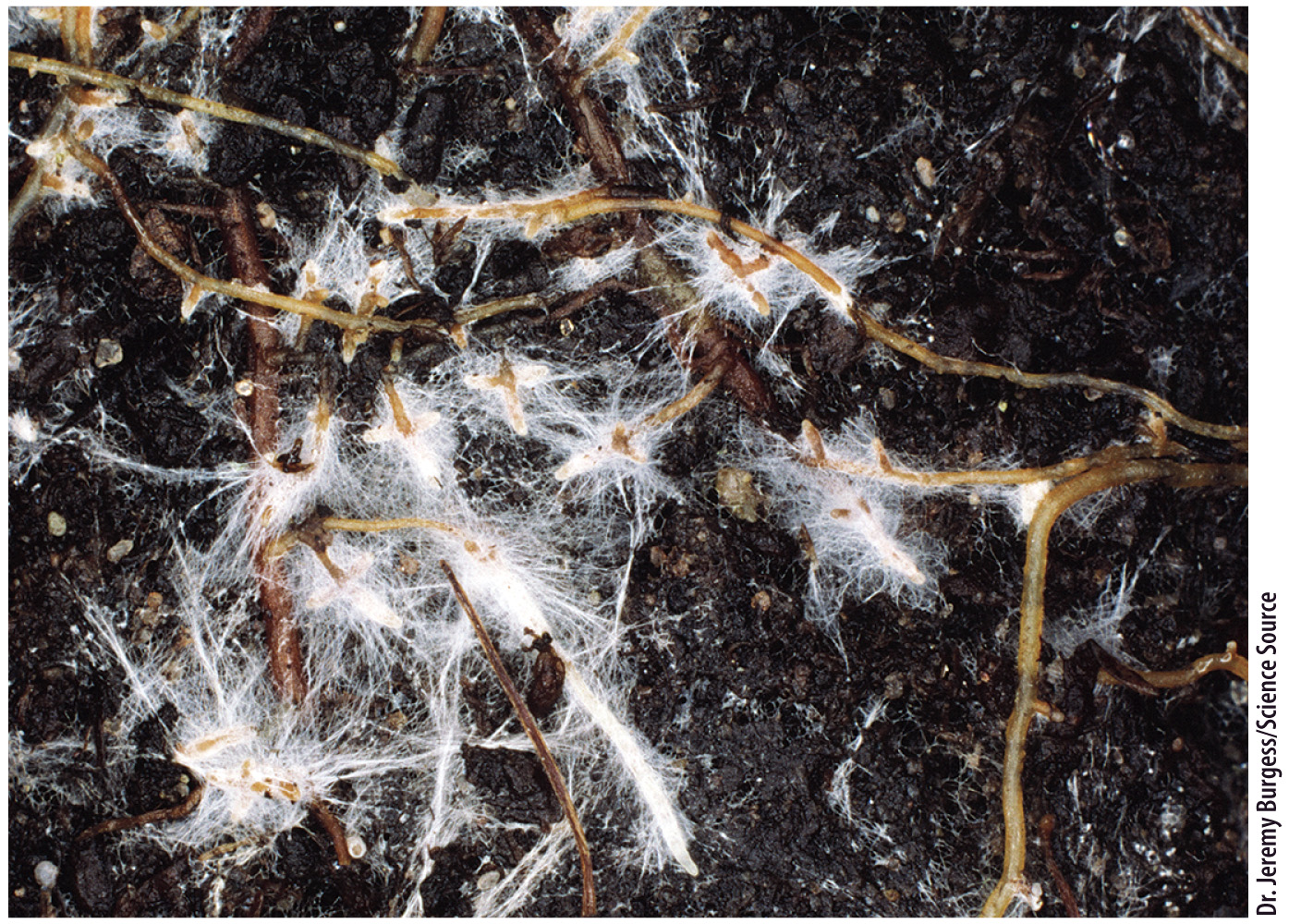Many fungi form symbiotic associations with plants and animals.
While some interactions between species benefit the fungus at the expense of its host, others benefit both partners. In Chapter 29, we saw that mycorrhizal fungi supply plant roots with nutrients such as phosphorus and nitrogen from the soil and in return receive carbohydrates from their host (Fig. 34.7). There are two main types of mycorrhizae. The hyphae of ectomycorrhizal fungi surround, but do not penetrate, root cells. In contrast, the hyphae of endomycorrhizal fungi penetrate into root cells, where they produce highly branched structures that provide a large surface area for nutrient exchange. As we discuss in section 34.3, the endomycorrhizal fungi constitute a monophyletic group dating back over 400 million years. In contrast, ectomycorrhizae are present in multiple groups and appear to have evolved more than once.

Other fungi, called endophytes, live within leaves. While endophytes are much less studied than mycorrhizae, they may be as widespread. Endophytic hyphae grow within cell walls and in the spaces between cells. Long thought to be harmless, endophytes are now recognized as beneficial. They may help the host plant by producing chemicals that deter pathogens and herbivorous insects.
Mutually beneficial associations between fungi and animals are much less common, but a few examples are known, none more striking than insects that actually grow fungi for food. The fungi benefit because the insects provide shelter, food, and protection from predators and pathogens. Insect–